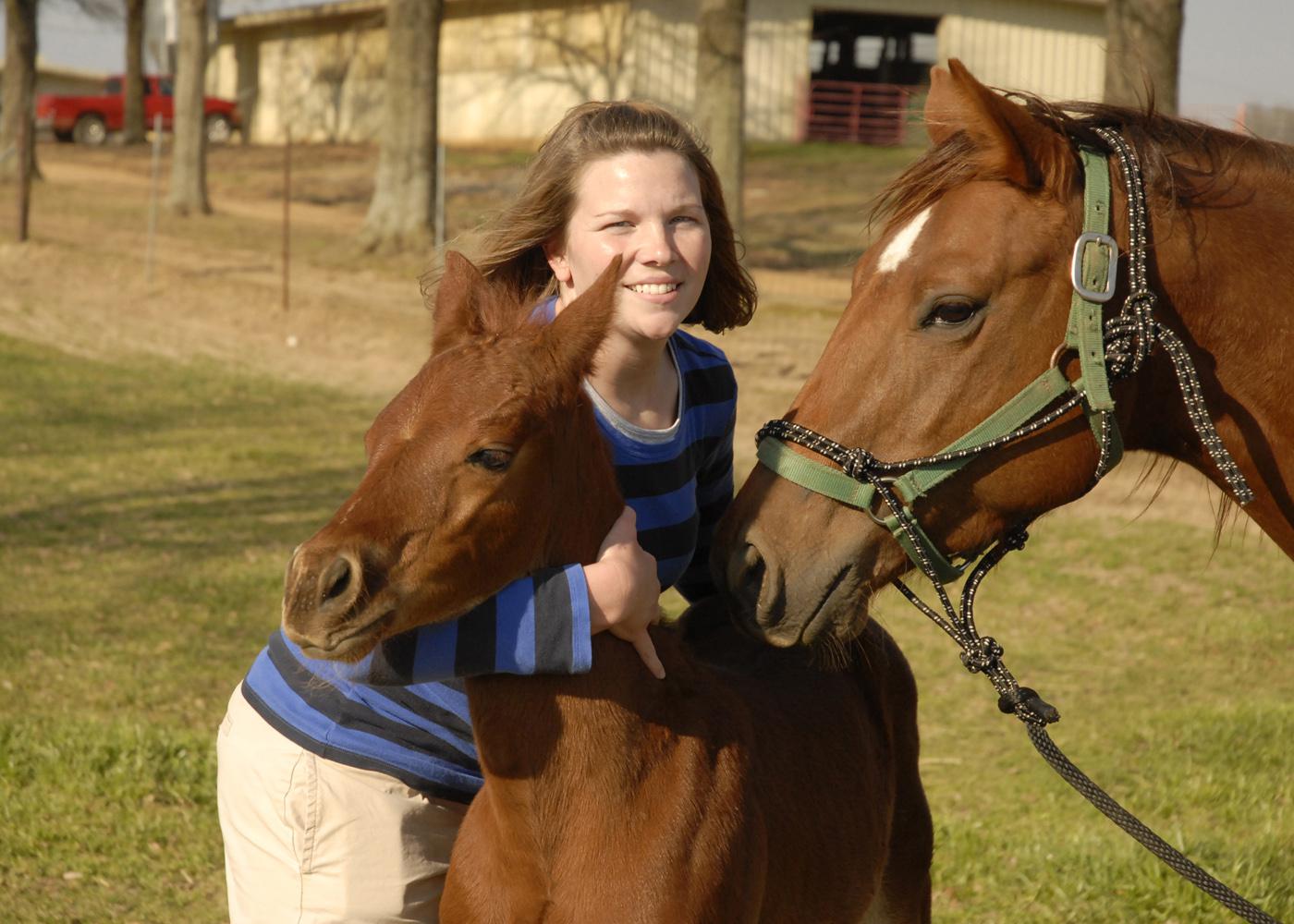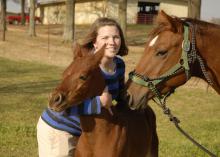Information Possibly Outdated
The information presented on this page was originally released on April 30, 2009. It may not be outdated, but please search our site for more current information. If you plan to quote or reference this information in a publication, please check with the Extension specialist or author before proceeding.
MSU 'bails out' healthy twin foals
MISSISSIPPI STATE – Equine veterinarians at Mississippi State University feel like celebrating when they hear news about Freddie Mac and Fannie Mae.
Instead of gloom-and-doom news from Wall Street, they think about the healthy twin products of a champion cutting horse named Cal Senorita.
Cal has been a broodmare with MSU since 2000 after being sidelined with a career-ending leg injury. This beautiful, 15-year-old, sorrel quarter horse mare proved to be a champion again this spring by producing twins just days apart with the help of two surrogate mothers.
Dr. Joy Mordecai, a 2006 graduate of MSU’s College of Veterinary Medicine and equine reproduction resident, took part in the process of preparing Cal and the other mares for the 2009 foaling season.
“The quarter horse is a breed in which the mares will double ovulate, or produce two eggs in one cycle about 10 percent to 20 percent of the time,” Mordecai said. “Veterinarians monitor mares carefully because a twin pregnancy is dangerous for the foals and the mother. Cal has double ovulated in the past, so we were anticipating it again. Neither of the foals nor the mother were at risk because we planned the embryo transfer anyway.”
Mordecai and fellow resident Dr. Kevin Walters were able to retrieve the two embryos from Cal and place them in recipient mares. The resulting foals – one male, one female – were born nine days apart on Jan. 31 and Feb. 9.
Veterinarians and animal scientists with the Morgan Freeman Equine Research Unit and the Mississippi Agricultural and Forestry Experiment Station began working with the mares just after Thanksgiving to trigger earlier-than-normal reproductive cycles by increasing their exposure to light.
“Most mares do not cycle normally during late winter, so we basically got lucky to have two horses ovulating at the same time as Cal and ready to receive her embryos,” Mordecai said. “To be successful, horses need to be at the same point in their reproductive cycle to maintain the pregnancy.”
Cal Senorita first made a name for herself in MSU’s stables in 2005 after producing three foals in one season, one on her own and two with the help of surrogate mares. That was the last season veterinarians allowed her to carry her own foal.
Peter Ryan, professor of animal and dairy science, said carrying a foal full term and delivery are stressful on the mother’s body and can be dangerous to mares that are not 100 percent healthy.
Cal’s career-ending injury was to her stifle, the joint on the hindleg comparable to the human knee. Veterinarians decided that carrying the extra weight of a foal would be unhealthy for her.
“Our equine reproduction program is ideal for other horses like Cal -- high-quality horses that cannot carry their own foals or high-performance horses that need to continue competing while they are in their prime,” Ryan said.
Since getting into the horse business in 1995, Wayne Stewart of Macon has taken advantage of the MSU equine reproduction group’s expertise with some of his top American quarter horses and American paint horses.
“It just works out best when we can take our better mares and get more than one foal in a single reproductive season,” Stewart said. “We have one cutting horse now who has won a lot of money, and we’ll get three foals out of her this year. We can get a lot more money for foals from the better mares.”




